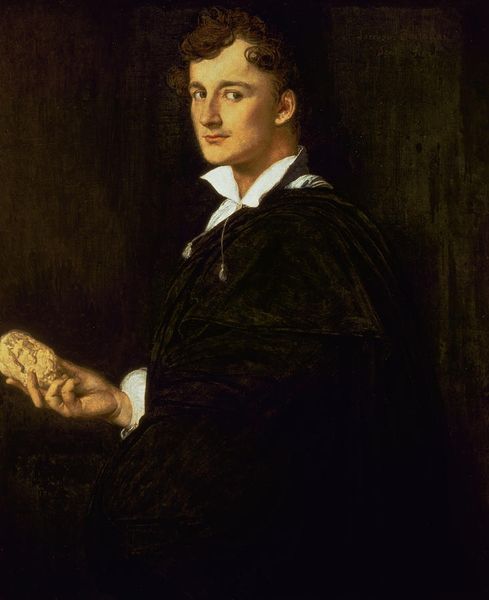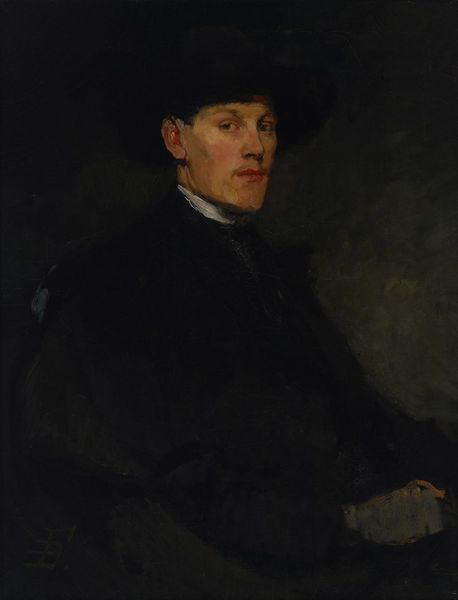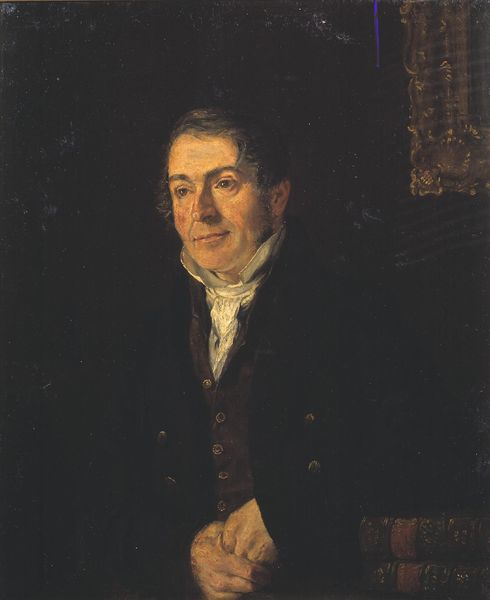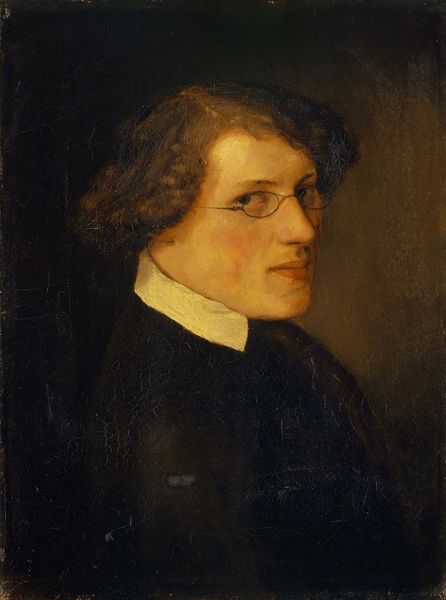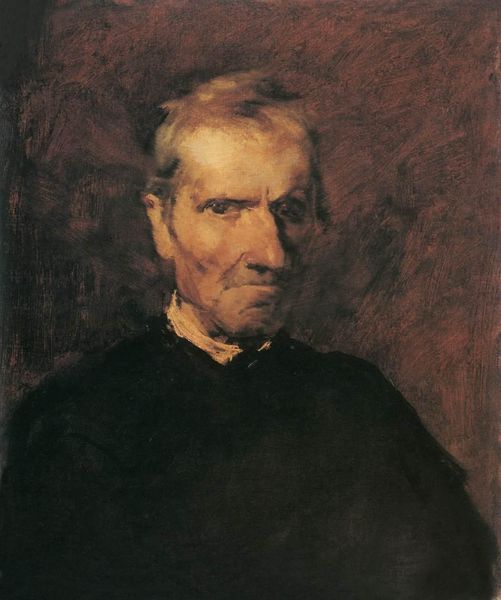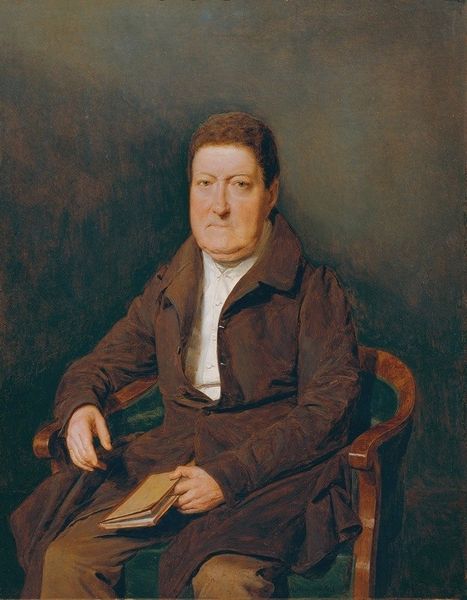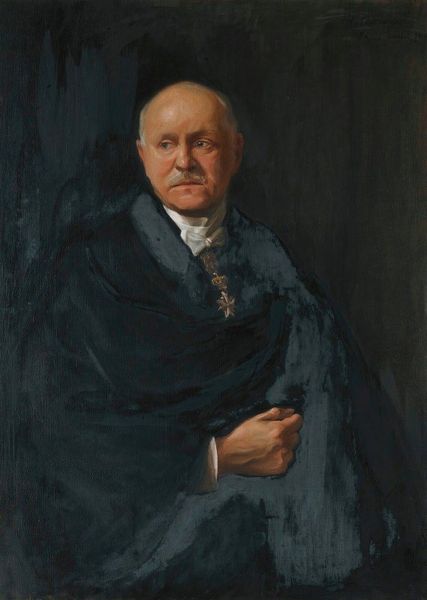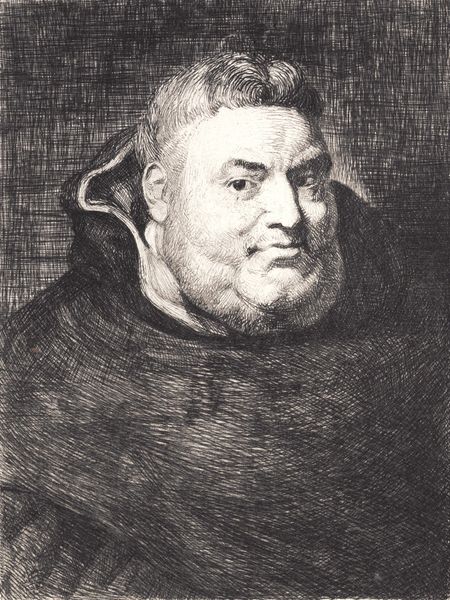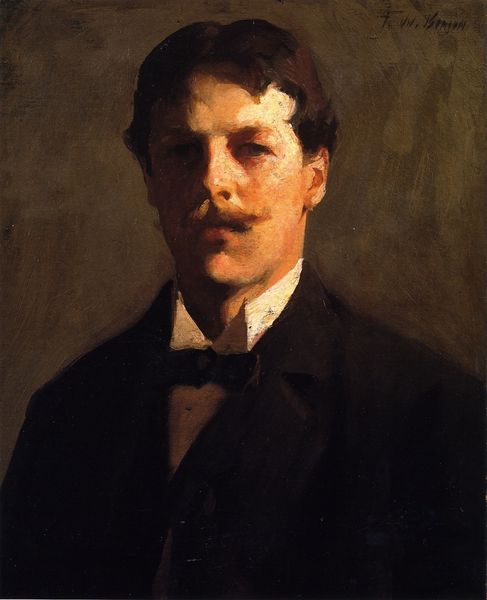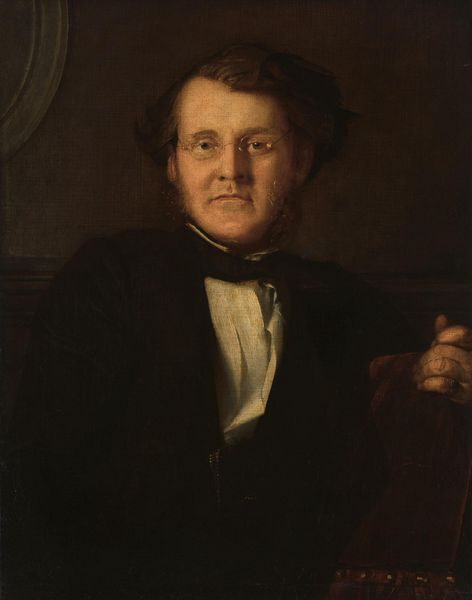
#
portrait
#
portrait reference
#
male-portraits
#
portrait head and shoulder
#
animal portrait
#
animal drawing portrait
#
portrait drawing
#
facial portrait
#
portrait art
#
fine art portrait
#
celebrity portrait
#
digital portrait
Dimensions: 75 x 54 cm
Copyright: Public domain
Curator: Standing before us is Francisco de Goya’s 1800 portrait of "Brother Juan Fernandez de Rojas," currently held at the Real Academia de Bellas Artes de San Fernando in Madrid. Editor: My immediate reaction is the darkness that engulfs the figure. The somber hues certainly set a serious, perhaps even austere tone. Curator: Absolutely. Consider the historical backdrop. This painting emerges from a period marked by societal upheaval, with the echoes of the French Revolution still reverberating and the rise of skepticism toward established institutions, including the Church. Rojas, as a religious figure, is portrayed with a notable lack of idealization. What message do you think Goya conveys through that contrast? Editor: The lighting contributes heavily, I think. Observe how it selectively illuminates Rojas's face, creating intense highlights and shadows. It's not flattering in a conventional sense; rather, it reveals a kind of vulnerability. His features are so precisely rendered; it draws attention to the realism—the palpable humanity beneath the monastic garb. The tight cap atop his head flattens his hair against his brow and directs more focus to his angular cheeks and brow line. Curator: It's interesting to note the level of comfort and perhaps even power conveyed through clothing. Rojas' attire does reinforce a separation in status and class. Yet Goya doesn't imbue Rojas with a superior presence. It is instead of calm resignation. Goya seemingly seeks to dismantle traditional power dynamics, depicting Rojas not as an omnipotent figure, but as an individual marked by the complexities of his time. Editor: I can certainly appreciate that reading, but also, it may come down to Goya simply experimenting with light and texture here. We have to be wary about over-interpreting what might also stem from his masterful observation of the subject. Look at the subtle blending of the browns in the background and the impasto of the face—these elements are purely aesthetic achievements. Curator: Perhaps. I still think that in viewing the art of the period with consideration for identity, race, gender, and politics allows an understanding of how such paintings and portraits challenge our present condition. Editor: Maybe so, yet studying form and technique in and of themselves provide equally enlightening insights into Goya's work, helping us understand art on its own terms.
Comments
No comments
Be the first to comment and join the conversation on the ultimate creative platform.

